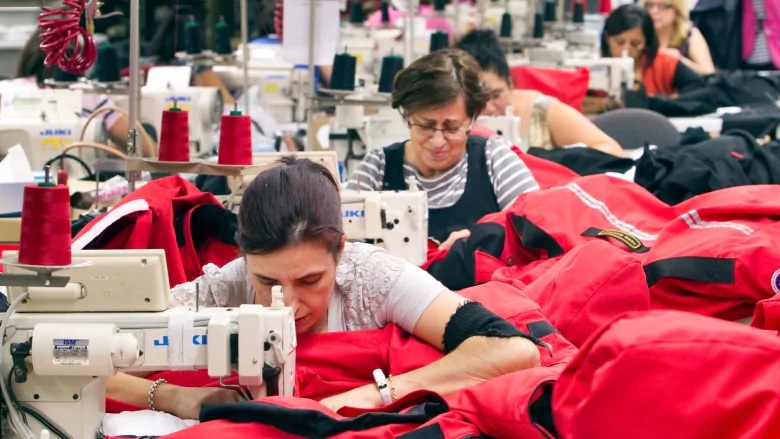It appears this is a pretty good time to be looking for work in Canada.
As the country’s job vacancy rate continues to grow, Canadian employers continue to adapt.
That means more training and more focus on keeping workers happy.

Ontario’s equal pay for equal work legislation came into effect April 1, 2018. Part-time, casual and seasonal employees must now be paid the same rate as their full-time colleagues if they perform the same work. (Fred Thornhill/Reuters)
A bi-annual survey conducted for HSBC, released Wednesday, finds that nearly half (47 per cent) of Canadian business leaders say they plan to increase spending on skills training for their staff over the next two years.
Another 42 per cent said they will spend more on employee satisfaction and well-being.
The report called Navigator: Made for the Future surveyed decision makers at 2,500 businesses in 14 countries and territories, 200 of them in Canada.
About 54 per cent of the Canadian business leaders surveyed said their companies would make investments that fall under the category of research, innovation and technology,
But the deputy head of commercial banking for HSBC Bank Canada, Don Leslie, says the survey results show that investment in new technology is only part of what will keep the system up and running well.
“Tech adoption brings improvements but also creates the need for new skills,” Leslie told the CBC’s Brandie Weikle.

A physiotherapist and occupational therapist help a hip replacement patient sit upright at Toronto’s St. Michael’s Hospital in May 2018. Jobs in health care and social assistance showed the most growth in vacancies in the first quarter of 2019. (Chris Young/The Canadian Press )
“The priorities have shifted since some of our last surveys away from trade or capital investment and more toward investment around the well-being of their workforce.”
Leah Nord, director of skills and immigration policy at the Canadian Chamber of Commerce, says businesses need workers.
“Right now, we have half a million job vacancies across the country, and we have record job growth,” Nord told Weikle.
With Canada’s low fertility rate and high retirement rates, “this is not going to get any better.”
Job vacancies tend to bode well for Canadians with the right skills but pose a challenge for some businesses, especially small ones.
How those businesses find the time and money to provide on-the-job training is a subject that is bound to come up as Canada heads to a federal election this fall.
The Chamber of Commerce is making a number of recommendations, including more funds for businesses to provide training.

A pumpjack works at a well head on an oil and gas installation near Cremona, Alta. Job vacancies dipped in Alberta and Saskatchewan where the resource sector is still struggling. (Jeff McIntosh/Canadian Press)
Nord says that could take the form of tax credits or other incentives, such as a short holiday from paying as a short holiday from paying employment insurance premiums for a new hire during their training period.
Not only is training and development key to solving labour-market and skills shortages, it’s what employees are looking for these days, says Sara Cooper, vice-president of people for Edmonto-based company Jobber, which makes software for small business providers who work around the home, such and plumbers and law maintenance crews.
“A lot of leaders are getting really smart about the fact that people are looking for development,” Cooper told Weikle.
“They don’t necessarily want to spend a tonne of time in one role or focused in one area.… You need to speak their language and be able to provide them with the things that they feel they need to be successful, whatever that looks like.”
With files from CBC







For reasons beyond our control, and for an undetermined period of time, our comment section is now closed. However, our social networks remain open to your contributions.